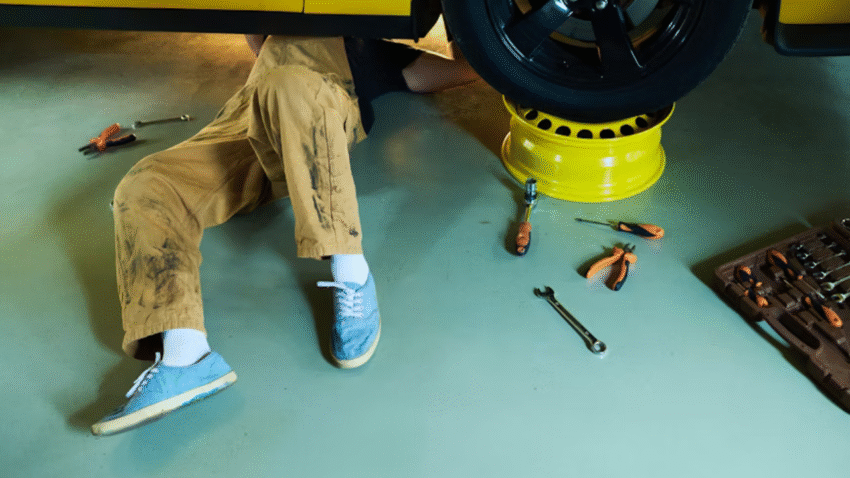Introduction
Do you dread digging through piles of boxes every time the seasons change? Learning how to organize seasonal items in your garage can turn the frustration of hunting for holiday decorations, camping gear, or winter coats into a quick and easy process. By creating a smart seasonal storage system, you’ll free up space, keep your garage functional year-round, and extend the life of your belongings.
Why Organizing Seasonal Items Matters for Your Garage
Garages often become the default storage spot for anything that isn’t needed all the time—holiday decorations, sports gear, gardening tools, winter clothing, and more. Without a system, these items can pile up and lead to:
- Clutter and lost space – Piles of off-season items block workbenches, shelving, or even your garage door access.
- Damage to items – Temperature swings, pests, and moisture can ruin seasonal gear if it’s not stored properly.
- Wasted time – Searching for one box of Christmas lights or your favorite camping stove can take hours without an organized setup.
- Reduced safety – Stacking heavy, unorganized boxes can lead to accidents.
Organizing seasonal items with labeled bins, shelving, and clear zones ensures your garage stays neat while keeping what you need within reach.
Step-by-Step Guide to Organizing Seasonal Items
1. Identify Your Seasonal Categories
List the types of items you only need at certain times of year. Common categories include:
- Winter – Snow shovels, holiday decorations, winter coats, ski gear.
- Spring – Gardening tools, fertilizer, seed packets, patio furniture cushions.
- Summer – Beach gear, camping equipment, bicycles, sports gear.
- Fall – Leaf blowers, rakes, Halloween decorations.
2. Declutter Before You Store
Go through each category and get rid of broken, outdated, or unused items. This frees up valuable garage space and prevents you from storing things you no longer need.
3. Choose the Right Storage Containers
Invest in sturdy, stackable bins with tight-fitting lids to protect items from dust, pests, and moisture. Use clear bins for frequently used seasonal items so you can see the contents, and color-coded bins for quick identification (e.g., red for Christmas, orange for Halloween).
4. Label Every Bin Clearly
Use large, easy-to-read labels on at least two sides of each bin. Include both the season and a brief list of contents (e.g., “Winter – Lights, Ornaments, Wreaths”). Consider using a label maker or weatherproof tags for a clean, long-lasting finish.
5. Create Dedicated Seasonal Zones
Assign a specific section of your garage for seasonal storage. This could be:
- Overhead racks – Perfect for light, bulky items like holiday decorations or camping chairs.
- Top shelves – Store off-season bins you won’t need for several months.
- Lower shelves or floor space – Keep heavy seasonal tools like snow blowers or lawnmowers here for safety.
6. Rotate Items with the Seasons
When the season changes, move the current items to easily accessible spots and place the off-season bins higher or deeper into storage. This keeps what you need most right at your fingertips.
7. Protect Items from Garage Conditions
Use moisture absorbers in bins with fabrics, keep electronics in climate-safe containers, and store delicate decorations in padded boxes to prevent damage from temperature changes or pests.
Common Mistakes to Avoid
- Mixing seasons in one bin
- Mistake: Tossing summer camping gear in the same bin as winter holiday lights.
- Solution: Keep bins season-specific to make swaps fast and easy.
- Not using vertical space
- Mistake: Stacking bins on the floor where they get in the way.
- Solution: Install shelving or overhead racks to keep floors clear.
- Vague labeling
- Mistake: Writing “Decorations” without noting the season.
- Solution: Always specify the season and contents.
- Ignoring protection from garage climate
- Mistake: Storing delicate fabrics or electronics in unsealed cardboard boxes.
- Solution: Use sealed plastic bins, moisture absorbers, and protective wraps.
- Forgetting to rotate items
- Mistake: Leaving summer gear buried behind winter items when warm weather arrives.
- Solution: Rotate storage zones at the start of each season.
Extra Garage Tips & Hacks
- Use rolling storage carts for items you need to move outside seasonally, like sports gear or garden tools.
- Install pegboards for hanging seasonal tools—rakes in the fall, snow shovels in the winter.
- Add ceiling-mounted racks for storing lightweight, bulky seasonal decorations.
- Related read: Check out our guide on maximizing vertical storage space in your garage.
Conclusion
Organizing seasonal items in your garage doesn’t have to be a chore. By categorizing, labeling, and storing your items in a systematic way, you can keep your garage clean, safe, and functional all year long.
Pro Tip: Schedule a seasonal swap day every three months to keep your garage fresh and clutter-free. Bookmark this guide so your garage stays ready for whatever the next season brings.
